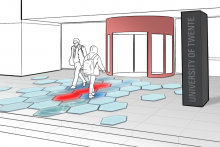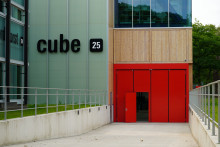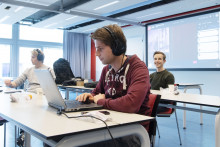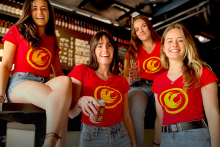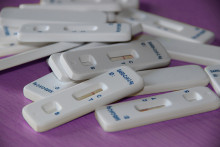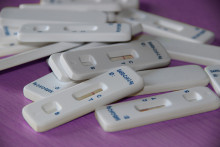In the Industrial Design Engineering bachelor course Human Product Relations, students are given the task to create a design in which the experience of the user is key. This year's theme focused on social distancing. ‘We wanted to draw students' attention to the added value of design', explains course co-coordinator Deǧer Özkaramanlı. ‘When you enter the campus these days, it seems as if you are entering a hostile environment. Because of all the signs and stickers, it's no longer a stimulating and carefree learning environment. These measures are necessary, of course, but a good design can make people embrace the rules, instead of imposing an extra cognitive burden on them.’
With this assignment in the back of their minds, 146 students in 29 groups set to work on their design. In the first weeks, they carried out research into the situation on campus. The Campus and Facility Management (CFM) department was also invited. ‘They shared detailed information about what is happening on campus in Covid times', says course co-coordinator Armağan Karahanoğlu. ‘Our students were also able to ask questions and present their designs to the CFM staff.’
Struggles
Students went to work with mixed enthusiasm, Özkaramanlı knows. ‘Some came up with very creative ideas directly from their personal experience, such as solutions for playing sports together or having a drink. There were also students who had difficulty with the assignment. They said: we are confronted with this pandemic on a daily basis. It is emotionally taxing if we have to make a project about it too. I do understand their struggles: everyone is corona-tired.'
Nevertheless, the coordinators were positively surprised by the students' designs. ‘It was remarkable that they often managed to give a positive twist to the measures, for example by turning them into a game', Karahanoğlu says. According to the coordinators, it remains to be seen whether we will actually see the designs back on campus. Özkaramanlı: 'I can see that happening, though. Some smaller projects are certainly applicable on campus. But designing a product is one thing, actually putting it on the market is something else.’
Tiles, coasters and clips
Koaster This interactive coaster around your neck will make it fun to keep your distance during drinks. The 'penalty light' on the coaster gets brighter when people get too close to each other. Users can also indicate whether they are in for a chat through different colors. If your 'non-safety score' is one hundred percent, you have to hand in the coaster and you are ‘game over’.
Designers: Ilse Akkermans, Joris van den Brekel, Baukje Faber, Beatrijs Hinloopen, Roan van Kammen, Tim ter Schure
Smart Path These smart tiles at the entrance of the Horst Tower ensure that people keep a distance of 1.5 meter. Users are guided by the tiles when entering or leaving the building. This improves the flow of people and helps to keep a safe distance through a playful interaction.
Designers: Jessica Bos, Femke Kok, Rik Neutkens, Sanne Nijland, Judith-Anna van Valkenburg
The Clip This clip, which you hang around your neck, is specifically designed for the Sports Centre. The wearable smart device will turn social distancing and sanitizing into a real game. You get points for disinfection and when you haven't been too close to others for fifteen minutes. The main question: will you successfully pass the Sports Centre?
Designers: Adiane Brillant, Dianneris Diaz Quinde, Maede Khademi, Dirk Schwertasek, Tim Woertman
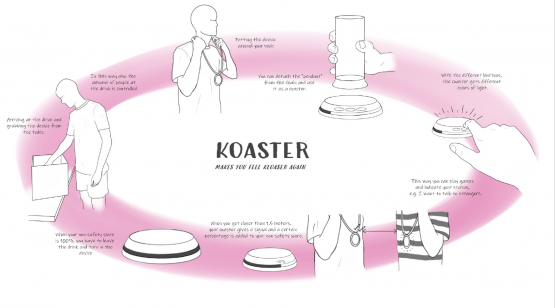
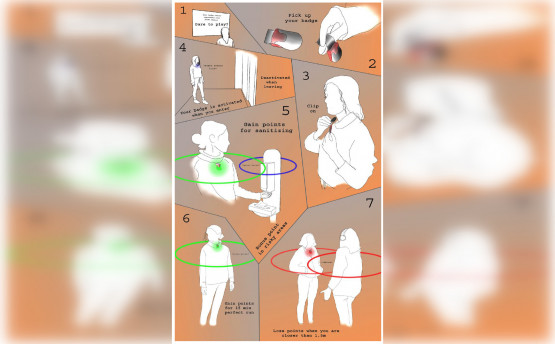
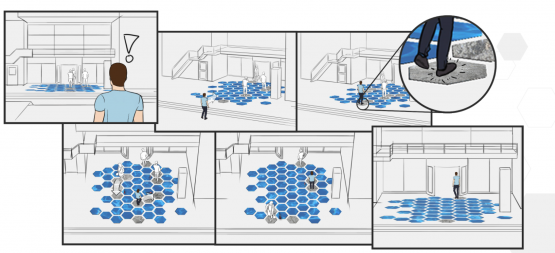
A visual impression of three designs (clockwise: Koaster, The Clip, Smarth Path)


